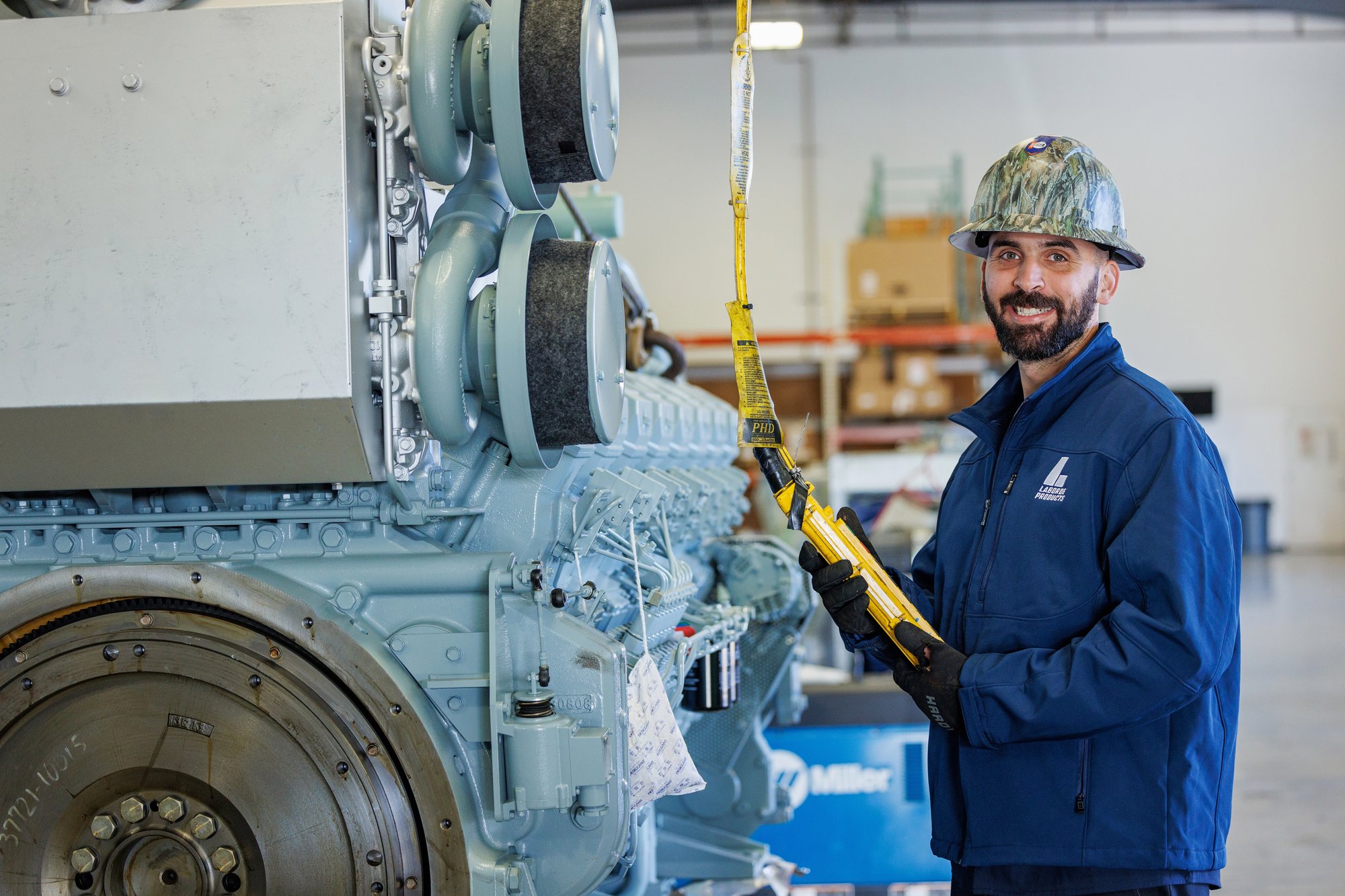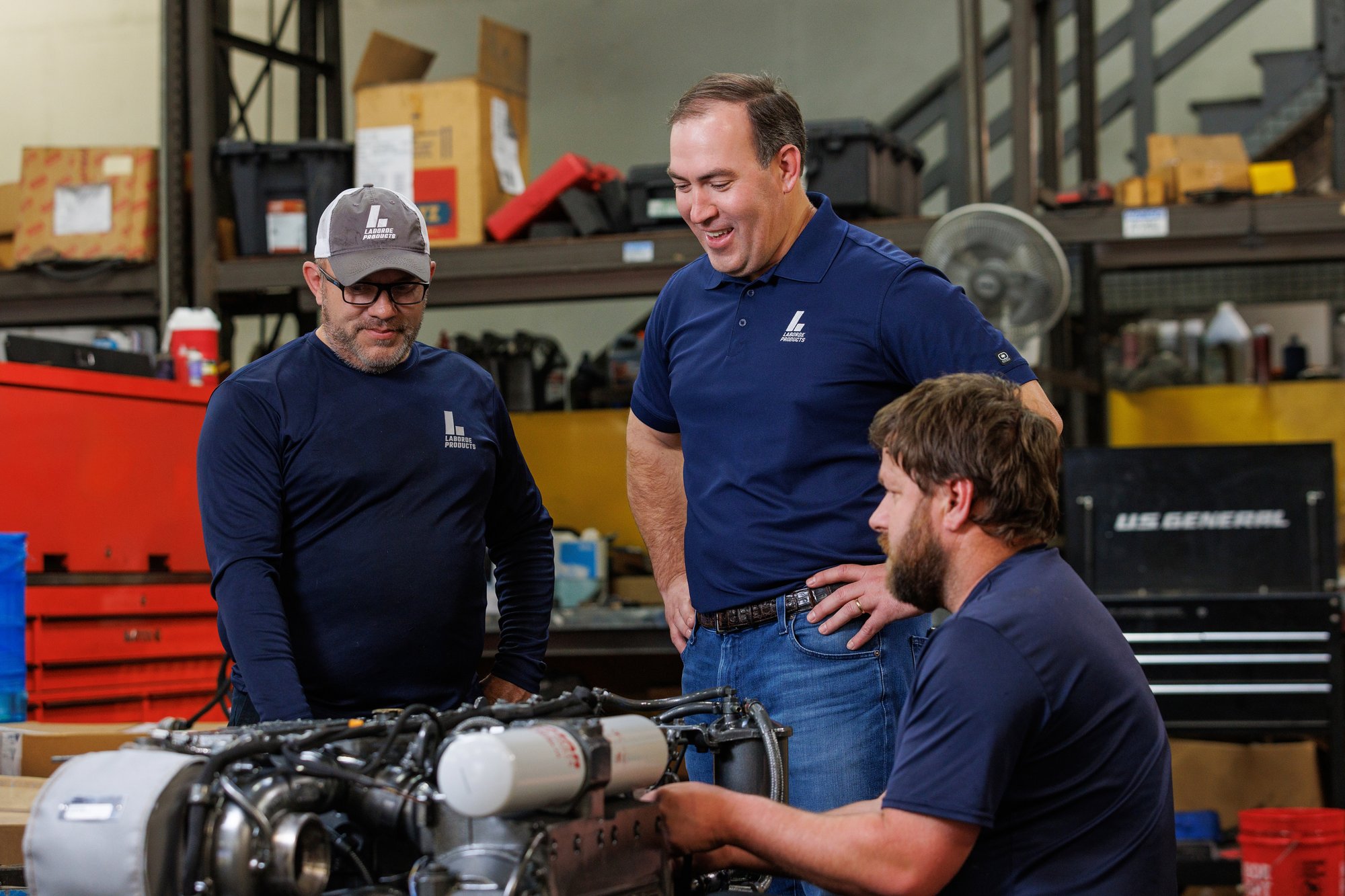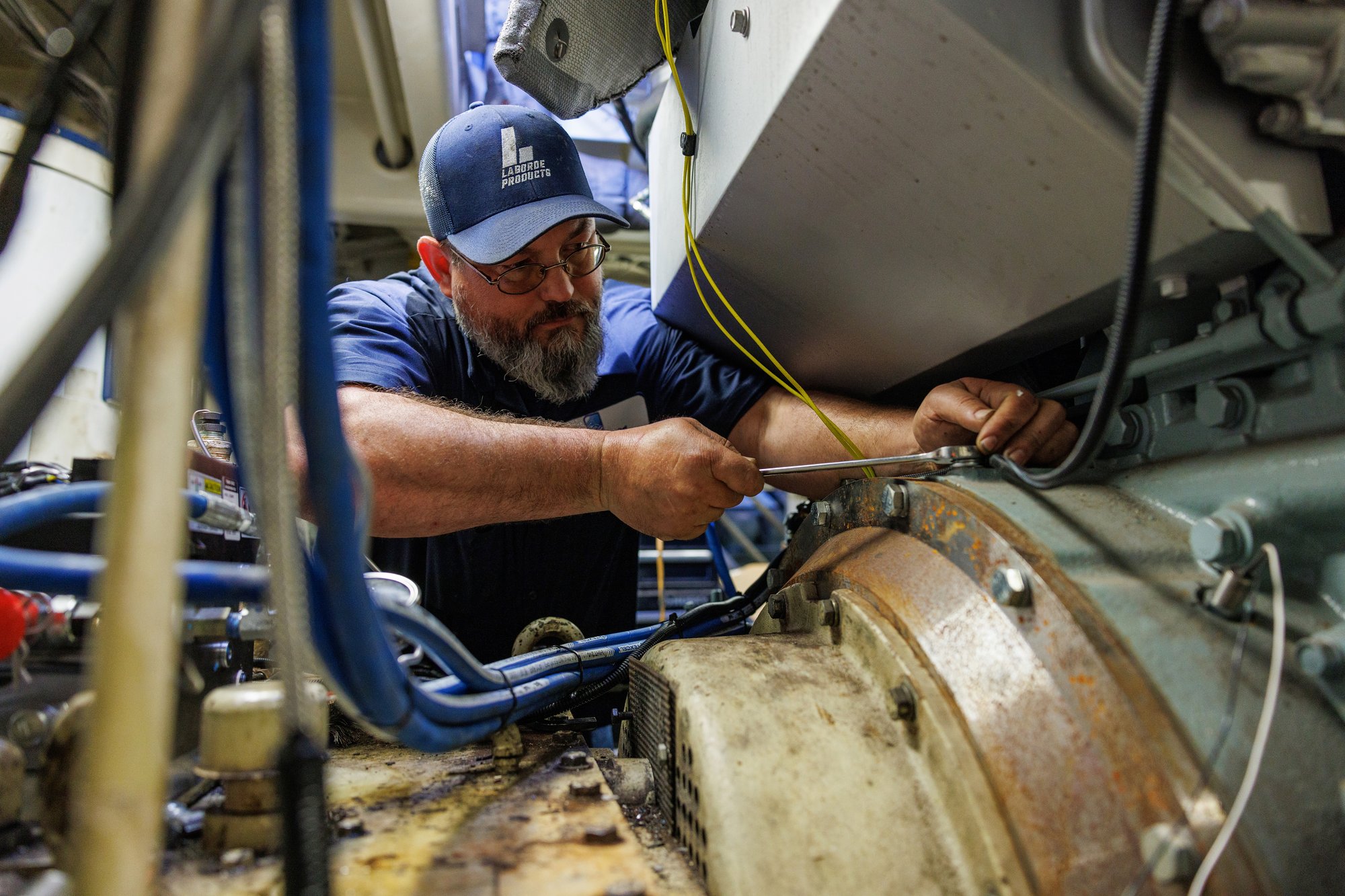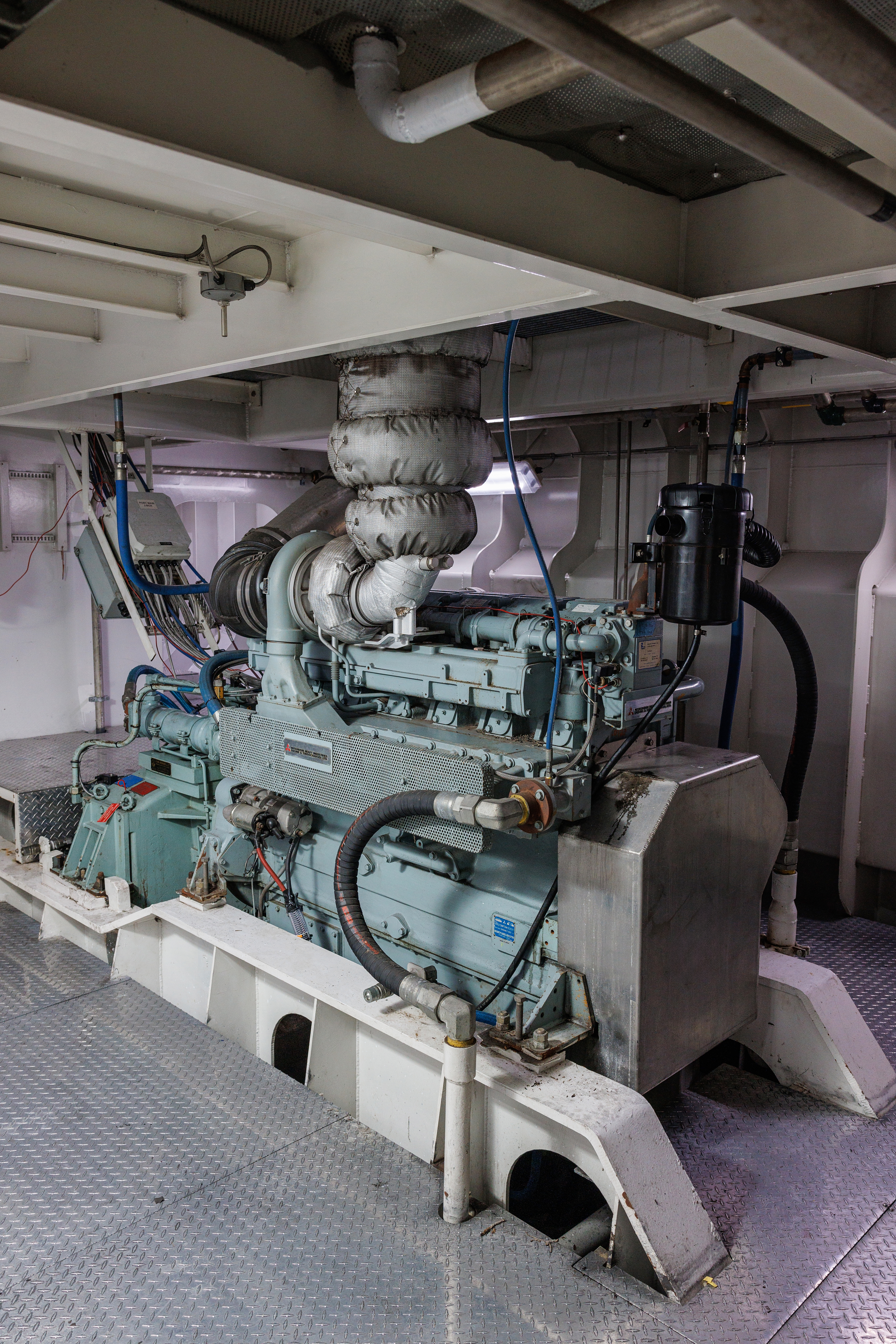Marine diesel engines are built for long hours and hard work, but that kind of performance doesn’t happen by chance. Every hour adds wear, and if maintenance gets skipped or delayed, those hours start working against you. Reaching 20,000 hours isn’t out of the question for many engines, but getting there in one piece takes planning.
This article covers the importance of marine diesel engine maintenance and highlights the practices that truly make a difference, including top end overhauls, fluid analysis, and regular inspections. If you're running high hours and want your engine to keep up, here's what matters.
How Long Does a Marine Diesel Engine Typically Last?
Operators usually start with one simple question: How many hours should a marine diesel engine last? Most well-maintained engines deliver 10,000–20,000+ hours of reliable service. But that range depends heavily on how the engine is treated.
Many Mitsubishi commercial propulsion engines reach 20,000 hours or more before needing a top end overhaul, and some run significantly longer with proper care. That gives them a longer run between major service than many comparable engines, including some CAT or Cummins models, which are often overhauled around 12,000–15,000 hours depending on application. However, in certain cases, those engines may also reach 35,000–40,000 hours with the right maintenance and operating conditions.
Several variables shape overall lifespan:
- Fuel quality – Clean fuel prevents injector issues and internal contamination
- Load profile – Engines run at consistent load levels generally last longer
- Maintenance habits – Skipping oil or filter changes compounds wear
- Cooling system health – Overheating is one of the fastest ways to damage an engine
- Operating environment – Saltwater, heat, and debris all accelerate wear
How Do Operating Conditions Impact Marine Diesel Engine Life Expectancy?
Marine diesel engines are built for reliability, but lifespan heavily depends on their operating conditions. Understanding and managing these conditions can significantly extend engine life:
Load and Propeller Configuration:
- Engines with propellers pitched too aggressively or regularly overloaded can experience premature wear.
- Consistently running at optimal loads typically results in a longer engine lifespan
Application and Storage:
- Engines on heavy-duty applications, like push boats, encounter sustained stress compared to seasonal use vessels like lobster boats.
- Improper storage or prolonged inactivity without preventive measures can lead to internal corrosion, including cylinder rust and pitting.
- Operating in debris heavy waters increases the risk of physical damage and accelerated wear.
Cooling System Management:
- Maintaining proper coolant levels is crucial. Low or contaminated coolant leads to erosion and cavitation damage, especially around liners and engine blocks.
- Dirty coolant deteriorates mechanical seals, potentially allowing water ingress, damaging internal components.
Crew Competence and Maintenance Routines:
- Poor crew training can result in overlooked maintenance tasks, increasing risks such as cylinder glazing, leading to oil consumption and reduced efficiency.
- Overfilling oil and neglecting routine checks, like annual inspections of water pump belts, contribute to accelerated engine wear.
What are the Most Common Causes of Marine Diesel Engine Failure?
-
Neglecting Maintenance Intervals
Skipping or delaying oil changes, filter replacements, and essential fluid analyses significantly reduces engine longevity. Deferring scheduled overhauls and inspections exacerbates existing wear, causing minor issues to rapidly escalate.
-
Operational Errors
Extended idling, incorrect RPM management, and consistently operating beyond the engine's designed specifications lead to accelerated deterioration.
-
Mechanical Failures from Neglect
Ignoring minor symptoms, such as valve noise or increased fuel consumption, can result in major breakdowns like valve drops, leading to piston and cylinder damage. Loss of lubrication due to overlooked oil leaks or contamination accelerates internal component failure.
What Maintenance is Essential for Long-Lasting Marine Diesel Engines?
A top-end overhaul is the first major maintenance milestone for ensuring a marine diesel engine’s longevity. It resets key performance systems by replacing worn components like cylinder heads and injectors. Gaskets and seals throughout the top end also get replaced, while other systems are inspected for wear.

Benefits of a scheduled top end overhaul:
- Controlled downtime: plan service around your schedule, not a breakdown
- Restored performance: fuel efficiency, output, and reliability improve
- Longer overall lifespan: many engines run another 15,000–20,000 hours after overhaul
- Preventative protection: replacing worn parts before failure prevents cascade damage
A top end at around 20,000 hours is a practical way to prevent wear from turning into major failure. Routine service at this point helps avoid larger repairs, unplanned downtime, and higher costs later. Just like rotating or replacing tires before they go bald, staying ahead of engine wear keeps things running safely and reliably.
On an S6R2, a typical top end takes about 2 to 3 days and brings the engine back to factory spec. In most cases, the cost is around 30 to 35 percent of a full engine replacement. A 6-cylinder job usually takes 3 days. A 12-cylinder may require 5 to 6 days from start to sea trial.
How Can You Extend the Lifespan of a Marine Diesel Engine?
Marine engine care practices are essential to keep your vessel running past the 20,000-hour mark. Here are the top 5 practices:
- Use fluid analysis programs
Routine oil and coolant sampling can catch small issues early and optimize service timing.
- Stick to scheduled maintenance
Oil and filter changes, belt inspections, and routine checks help prevent costly surprises.
- Don’t delay major service intervals
Top end overhauls are recommended for a reason, especially on high-hour vessels.
- Perform regular inspections
Think of these as engine wellness checks. They identify what needs fixing now vs. later. Laborde’s custom inspection forms make it easy to track key systems.
- Work with a knowledgeable service provider
Having access to technicians who understand your engine model, whether through your own team or a trusted partner, can help you avoid misdiagnosis, save time on repairs, and keep maintenance on schedule.
.jpg?width=2000&name=SE-LaBorde-LFST_551%20(1).jpg)
Signs Your Marine Diesel Engine Needs Attention—or an Overhaul
If you're seeing performance changes, don't wait for a full failure. Watch for:
- Loss of power or slow acceleration under load
- Increased fuel or oil consumption
- Smoke production or inconsistent starts
- Ticking or valve noise
- Reduces valve clearance
These symptoms don’t always mean it’s time to repower. In many cases, they indicate that an overhaul could restore performance and extend the life of your engine.
Marine Diesel Engine Problems: Signs it’s Time to Repower
A full engine replacement should be a last resort, but it does make sense when:
- Multiple overhauls haven’t resolved chronic issues
- Ongoing maintenance costs exceed engine value
- A newer engine would offer better emissions compliance or fuel efficiency

Protect your investment
You can’t control the elements, but you can control how your engine is maintained. A proactive approach that includes routine inspections, fluid analysis, and timely overhauls pays off in hours, reliability, and performance.

Our Service
Staffed with trained technicians who specialize in the products we sell and package, our Service Team is dedicated to keeping operators and their equipment running 24/7. These skilled technicians, along with our extensive dealer network, are well-versed in our products to meet the demands of operators along the inland waterways, coastwise, and industrial markets.
-1.jpg?width=2000&name=LBP-Houston-PROD-DET_003%20(1)-1.jpg)
Learn More
Learn more about Mitsubishi marine engine overhauls, including what's involved, how to prepare, and what to expect along the way.




